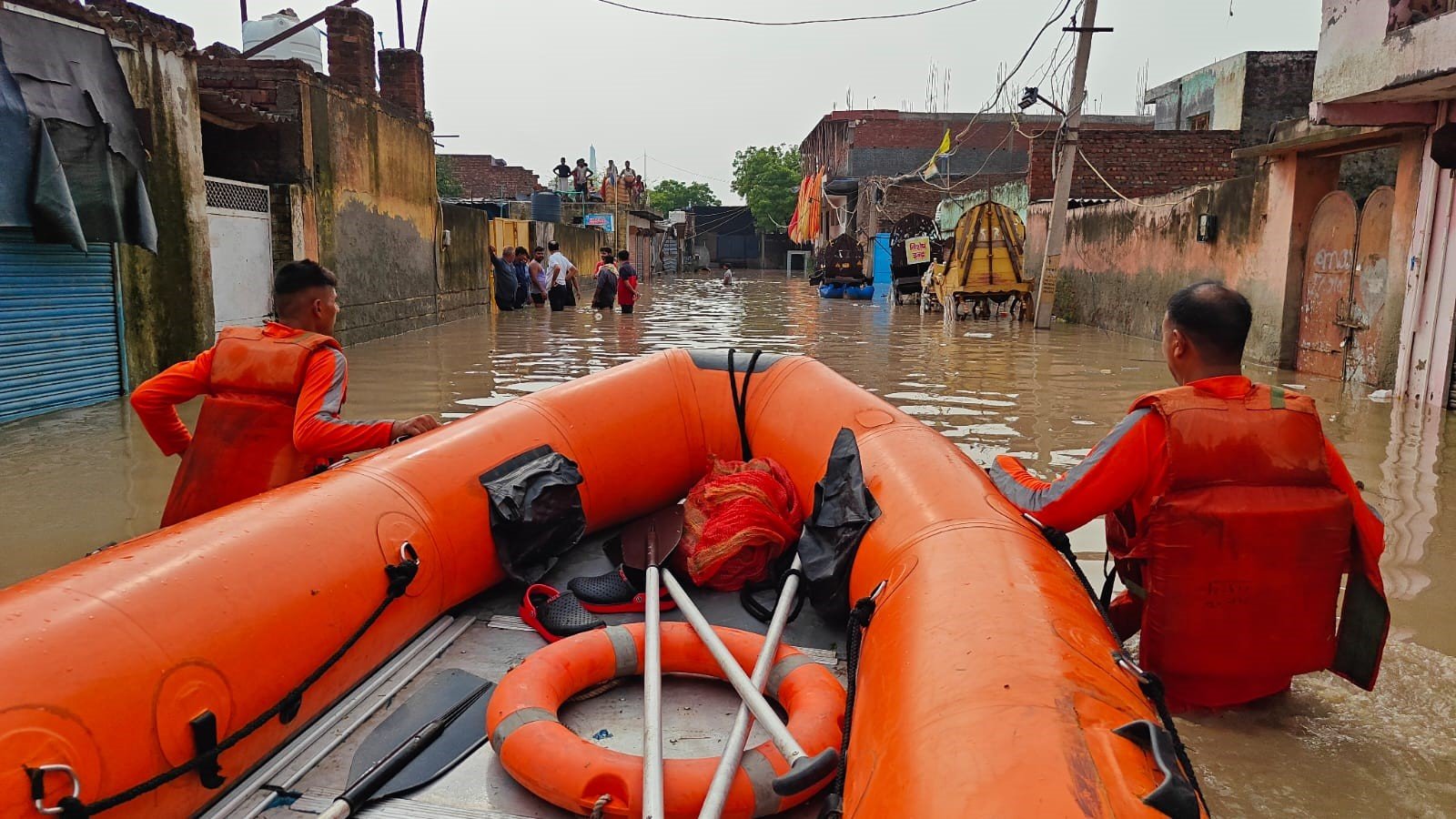Water from the Yamuna entered Mahatma Gandhi’s memorial at Rajghat in Delhi, inundating its lawns and pathways, Gandhi Smriti and Darshan Samiti Vice-Chairman Vijay Goel said on Friday.
Goel said the flood water rose up to the memorial complex’s entrance and later inundated the pathways leading to the marble platform where Gandhi was cremated.
“However, the water just touched the lower portion of the marble platform and the flame atop it was unaffected,” he told PTI.
Visuals of Rajghat showed water surging on the Ring Road and entering the memorial.
Goel said a part of the wall of the Gandhi Smriti and Darshan Samiti collapsed under the pressure of the water.
Earlier, Delhi Chief Minister Arvind Kejriwal told reporters that the flooding at Rajghat was due to the backflow from a drain in the area.
A PTI Video showed the memorial’s pathways and lawns inundated by waist-deep water.
Rajghat, built in Gandhi’s memory on the western bank of the Yamuna in Delhi, measures 44.35 acres. The memorial is a square stone platform in black marble.
The memorial was built on the site where Gandhi was cremated after his assassination on January 30, 1948, at Delhi’s Birla House.
The weather office has issued a ‘yellow’ alert for moderate rain and thundershowers on Saturday in Delhi, parts of which continue to reel from a flood-like situation.
Several areas, including Laxmi Nagar, Ayanagar, Lodhi Road, Mungeshpur and a few localities in east Delhi, witnessed light rainfall on Friday. There was a light drizzle in other areas, including Lutyens’ Delhi.
In a forecast, the India Meteorological Department said light to moderate rainfall is expected to continue in Delhi on Saturday and added that a ‘yellow’ alert has been issued for the city.
“There would be generally cloudy skies with moderate rain and thundershowers,” it said.
The Met office uses four colour codes — ‘green’ means all is well while ‘yellow’ indicates severely bad weather. It also suggests that the weather could change for the worse, disrupting daily activities.
An ‘orange’ alert is issued as a warning for extremely bad weather with the potential for disruptions in commutes with road and drain closures and interruption of power supply. A ‘red’ alert is issued when extremely bad weather conditions are certainly going to disrupt travel and power and pose a significant risk to life.
On Friday, the minimum temperature in Delhi settled at 26.8 degrees Celsius, a notch below the season’s average. The maximum temperature was also recorded a notch below normal at 34.2 degrees Celsius.
According to Central Pollution Control Board data, the 24-hour average Air Quality Index (AQI) stood in the ‘satisfactory’ category with a reading of 73.
An AQI between zero and 50 is considered ‘good’, 51 and 100 ‘satisfactory’, 101 and 200 ‘moderate’, 201 and 300 ‘poor’, 301 and 400 ‘very poor’, and 401 and 500 ‘severe’.
The relative humidity oscillated between 67 per cent and 92 per cent, the Met office said.
Floodwater from the overflowing Yamuna reached the entrance of the Supreme Court in central Delhi after a regulator of the Delhi Irrigation and Flood Control Department at Indraprastha suffered damage late on Thursday.
After breaching a 45-year record three days ago, the water level in the Yamuna in Delhi came down to 208.25 metres at 3 pm on Friday even as several key areas in Delhi remained inundated.


